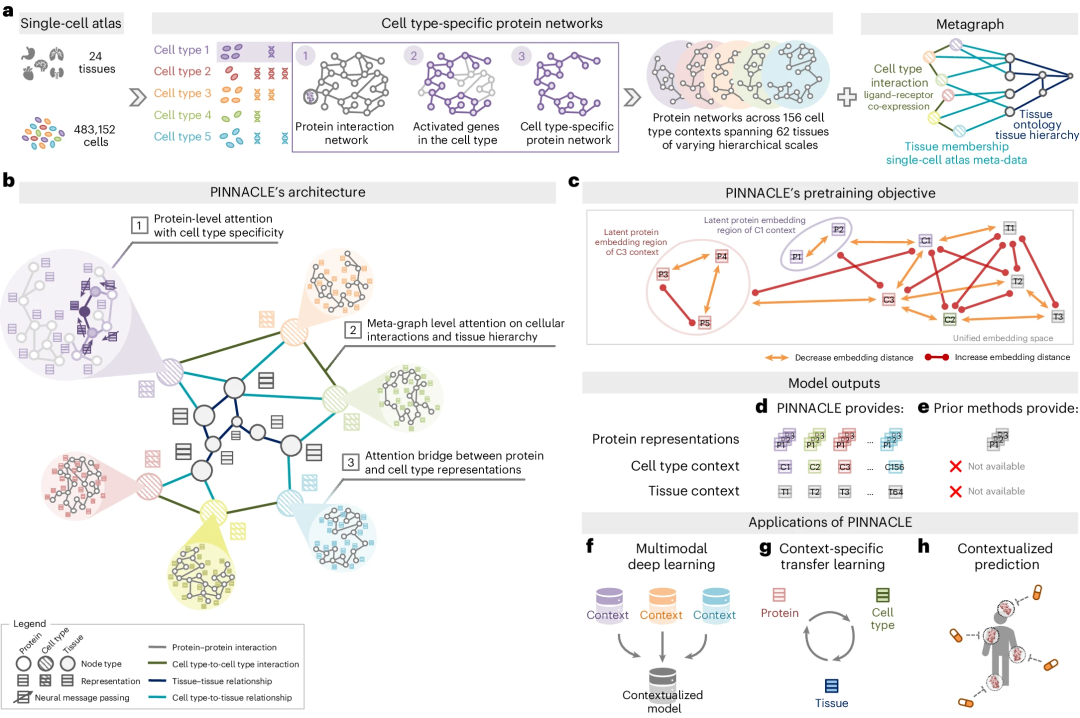

Understanding protein function and developing molecular therapies requires identifying the cell types in which proteins play a role and analyzing the interactions between proteins.
However, modeling protein interactions across biological contexts remains challenging for existing algorithms.
In the latest study, researchers at Harvard Medical School developed PINNACLE, a geometric deep learning method for generating context-aware protein representations.
PINNACLE leverages multi-organ single cell atlases to learn on contextualized protein interaction networks, generating 394,760 protein representations from 156 cell type contexts across 24 tissues.
The study was titled "Contextual AI models for single-cell protein biology" and was published in "Nature Methods" on July 22, 2024.

Context-dependent protein function
Single Cell Gene Expression and Protein Network
PINNACLE MODEL

Illustration: PINNACLE Overview. (Source: Paper)
2. Contextualized Protein Representation
PINNACLE is trained on an integrated context-aware PPI network, supplemented by a network that captures cellular interactions and tissue hierarchies, to generate protein representations customized for cell types .
3. Multi-scale representation
Unlike context-free models, PINNACLE generates multiple representations for each protein, depending on its cell type context. Additionally, PINNACLE generates cell type context and tissue-level representations.
4. Multi-scale learning
PINNACLE learns the topology of proteins, cell types and tissues by optimizing a unified latent representation space.
5. Context-Aware Models
PINNACLE integrates context-specific data into a single model and transfers knowledge between protein, cell type and tissue-level data.
6. Embedding Space
To inject cellular and tissue information into the embedding space, PINNACLE employs protein, cell type, and tissue level attention.
7. Physical interaction mapping
Physically interacting protein pairs are tightly embedded in the embedding space.
8. Cell Type Environment
Proteins are embedded near their cell type environment.
9. Graph Neural Network Propagation
PINNACLE propagates information between proteins, cell types and tissues using an attention mechanism customized for each node and edge type.

The above is the detailed content of Generating 394,760 protein representations, Harvard team develops AI model to fully understand protein context. For more information, please follow other related articles on the PHP Chinese website!
 HTML space setting method
HTML space setting method
 IIS unexpected error 0x8ffe2740 solution
IIS unexpected error 0x8ffe2740 solution
 Implementation method of js barrage function
Implementation method of js barrage function
 A complete list of linux server operation and maintenance commands
A complete list of linux server operation and maintenance commands
 C language random function usage
C language random function usage
 What is the mobile service password?
What is the mobile service password?
 How to lock screen on oppo11
How to lock screen on oppo11
 How to adjust computer screen brightness
How to adjust computer screen brightness




